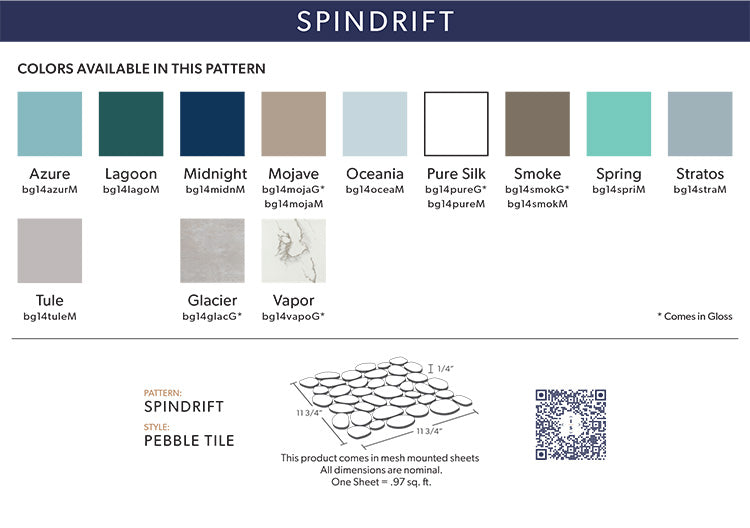If you think QR codes are a thing of yesteryear, think again.
The biggest game-changer to recently hit retail is actually pretty small — about an inch long, to be exact.
QR (quick response) codes are having a moment, and with good reason. They’ve grown up a lot since 2011, back when you needed an app to read them. These days, smartphone cameras can automatically read QR codes, no app needed.
This opens up all sorts of possibilities for retailers. Heavy hitters like Nike, Netflix, Starbucks and Coca-Cola have all figured out you can significantly drive customer engagement and sales with QR codes.
QR codes are not a thing of yesteryear. They’re an expectation of the modern shopper. That’s why our new merchandising system includes QR codes on each sample, giving the customer the most up-to-date information on that exact product.
After doing our homework, we know there are a lot of benefits to using QR codes in retail. Here are the top three perks we see:
They’re ridiculously easy to use.
If you’ve ever seen a toddler use a smartphone, you know how intuitive they are. They’re practically an extension of our bodies at this point. We swipe, tap, and click them 2,617 times per day.
It’s natural, then, for shoppers to whip out their smartphones to scan a QR code. In fact, it’s estimated that by 2022, 5.3 billion QR code coupons will be redeemed via smartphones. During the COVID-19 pandemic, QR codes have actually helped retail survive. For example, while car dealerships have been closed, shoppers could still visit lots and scan QR codes to get the vehicle information they wanted.
They make browsing so much better.
QR codes allow for curated shopping. If customers see something they like, a simple aim of their smartphone delivers all the latest, most relevant information about that exact product.
What’s more, QR codes bridge the physical and digital world in real time. That can be especially helpful for shoppers trying to make a decision on the spot. Think about it: if a customer sees a tile she likes, she can scan the QR code to get all the specifics. She can then forward that information to a spouse or interior designer who isn’t physically in the showroom, but wants to weigh in.
They beat barcodes and brochures.
Despite being so small, QR codes pack a big data punch. They can hold 7,089 alphanumeric characters. To put that in perspective, barcodes only hold about 20 digits. QR codes can also link to all sorts of information, including text, multimedia and social media channels.
We know what you may be thinking. Can’t a webpage do the same thing? Technically, yes. The big difference, however, is that still requires people to type in a web address. Scanning a QR code is much faster. It makes for a better experience, hands down.
Beyond their versatility, QR codes are also better for the environment. By sharing information digitally, they cut back on paper waste — which accounts for 25 percent of the trash in landfills.
We suspect you’ll be seeing plenty more QR codes over the next few years, and we’re proud to have included them in our new merchandising system. It’s one of the many ways we’re working to keep clients at the center of everything we do.
To stay up-to-date on all the things we’re doing, follow us on Twitter and Instagram. Better yet, if you have our merchandising system set up, post a picture and tag us so we can share it.

